Why Protecting Your Child from Drugs is Crucial
Drug abuse is a significant concern that impacts families worldwide. With adolescents increasingly exposed to substances at a young age, it is essential for parents to establish effective prevention strategies. Early intervention through education, communication, and support can make a substantial difference in guiding children away from the dangers of drug use. This article explores five actionable ways to protect your child from drugs, empowering parents to foster a safe and encouraging environment for their children.
Key Facts on Preventing Substance Abuse in Teens
- Setting clear rules about substance use helps guide teens toward healthy choices.
- Communication of consequences for breaking rules clarifies expectations and protects well-being.
- Ongoing conversations about drug risks keep teens informed and engaged in decision-making.
- Statistics show teens learning about drug dangers from parents are up to 50% less likely to abuse substances.
- Peer influence significantly impacts teenagers’ choices regarding drugs and alcohol.
- Monitoring friendships helps identify risky behaviors that may lead to substance use.
- Creating supportive environments encourages open communication and discourages drug use.
- Safe medication storage prevents unauthorized access and reduces the risk of misuse.
- Educate on prescription drug risks to demystify medications and prevent abuse.
- Engaging in family activities reinforces positive behavior and diverts attention from drugs.
1. Establish Clear Rules and Boundaries
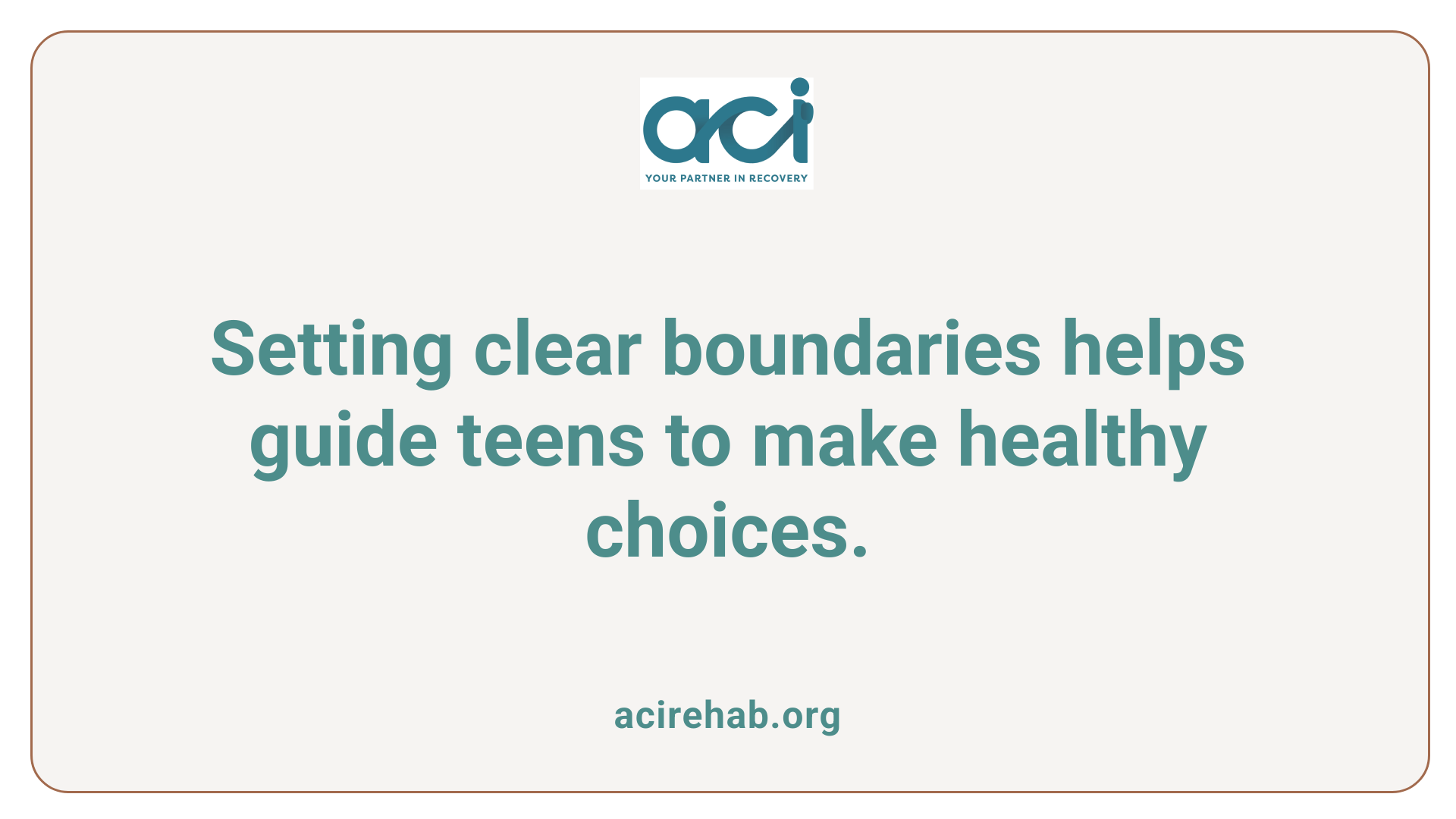
Importance of Setting Rules
Setting clear rules about substance use is vital in guiding children and adolescents toward healthy choices. Parents create a framework of expectations, helping their teens understand what is acceptable and what is not. When teens know the boundaries, they feel more secure and are less likely to experiment with drugs.
Clear Communication of Consequences
Communicating the consequences of breaking these rules is equally important. Parents should outline specific repercussions for substance use, making sure their teens understand them without ambiguity. A calm and rational discussion can help establish these boundaries, making it clear that the aim is to protect their well-being, not to control or punish.
Fostering Ongoing Conversations
Ongoing conversations about drug risks should occur regularly, rather than just in reaction to troubling situations. By engaging teens in discussions about peer pressure, family values, and the risks associated with drug use, parents can help their children make informed decisions.
Effective Prevention Strategies
To effectively prevent drug abuse in children and adolescents, parents should:
- Set Rules: Clearly define acceptable behaviors regarding drugs and alcohol.
- Explain Consequences: Ensure that the repercussions of breaking rules are understood.
- Model Behavior: Display responsible behavior regarding substance use.
- Foster Self-Confidence: Encourage participation in positive activities to build resilience.
- Stay Alert: Be vigilant about any changes in behavior which can indicate potential substance abuse.
2. Communicate Openly About Substance Risks
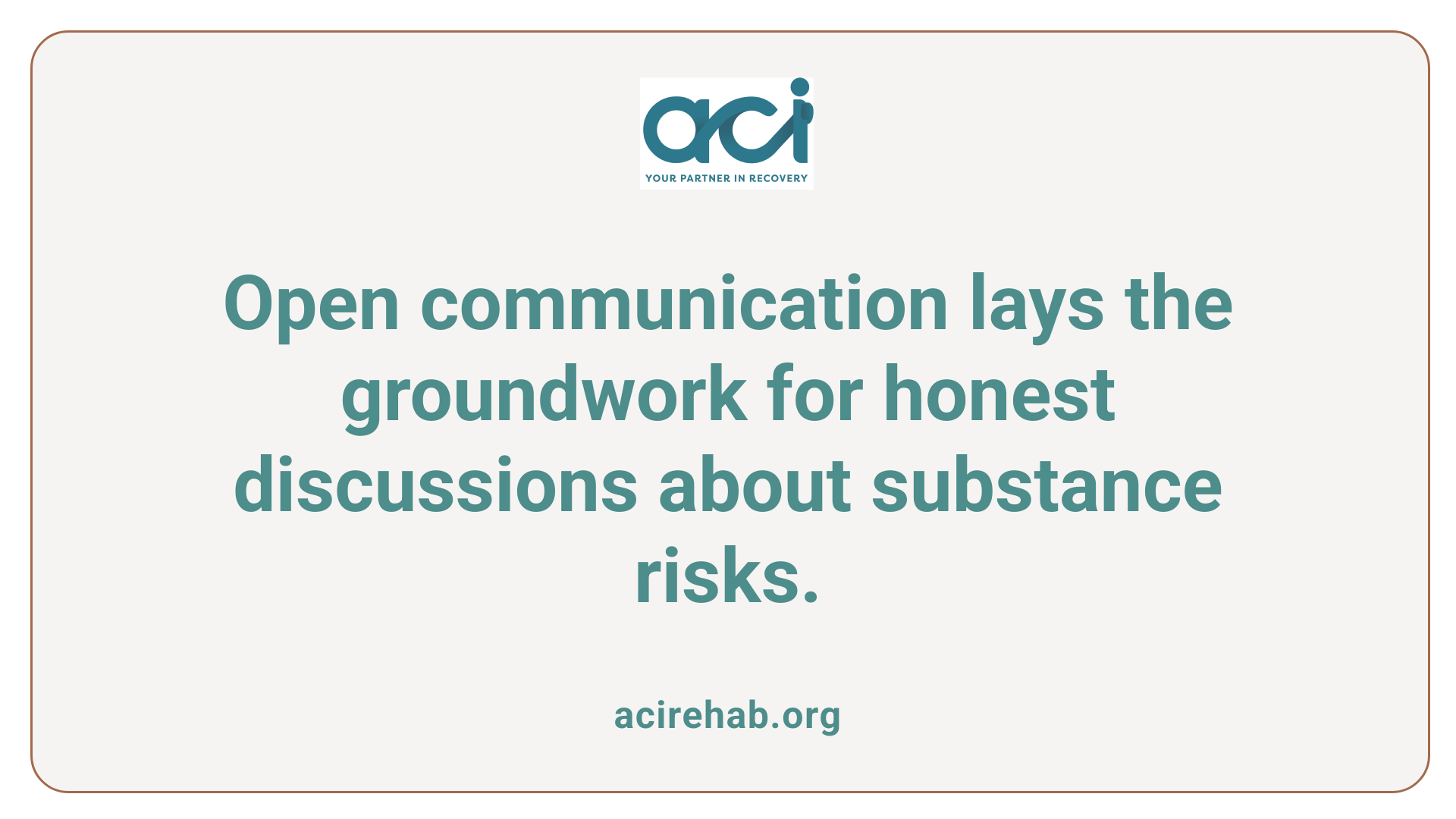
Encouraging Honest Dialogue
Creating an open line of communication about substance use is essential for parents aiming to keep their children safe. By discussing the dangers of drugs as early as preschool, parents lay the groundwork for healthy conversations. These discussions shouldn’t be one-time events but rather ongoing dialogues that evolve as children grow. Parents can utilize teachable moments, like when a relevant scene appears in a movie, to spark conversations about drug risks in a natural setting.
Engaging teens actively is vital; parents should ask for their opinions on substances and listen without lecturing. This approach fosters trust and ensures that children feel valued. When children see their parents discussing the risks of drugs nonjudgmentally, they’re more likely to open up about their own experiences and concerns. For example, discussions about prescription drugs should include their proper use and the risks of abuse, as many young people report accessing these medications from home.
Addressing Drug Misconceptions
It’s essential to debunk myths related to substance use to ensure clarity and understanding. Children often misconceive the effects of drugs based on social media or peer influence. Parents should provide age-appropriate information about various substances, emphasizing their health impacts and risks.
Statistics indicate that 31% of teens learn about drug dangers from their parents, and those who receive guidance are up to 50% less likely to abuse drugs or alcohol. This illustrates the significant role parents play in shaping their children’s decisions. By incorporating factual discussions about substances like alcohol and marijuana, parents can help their children make informed decisions and resist peer pressure effectively.
3. Know Your Child’s Social Environment
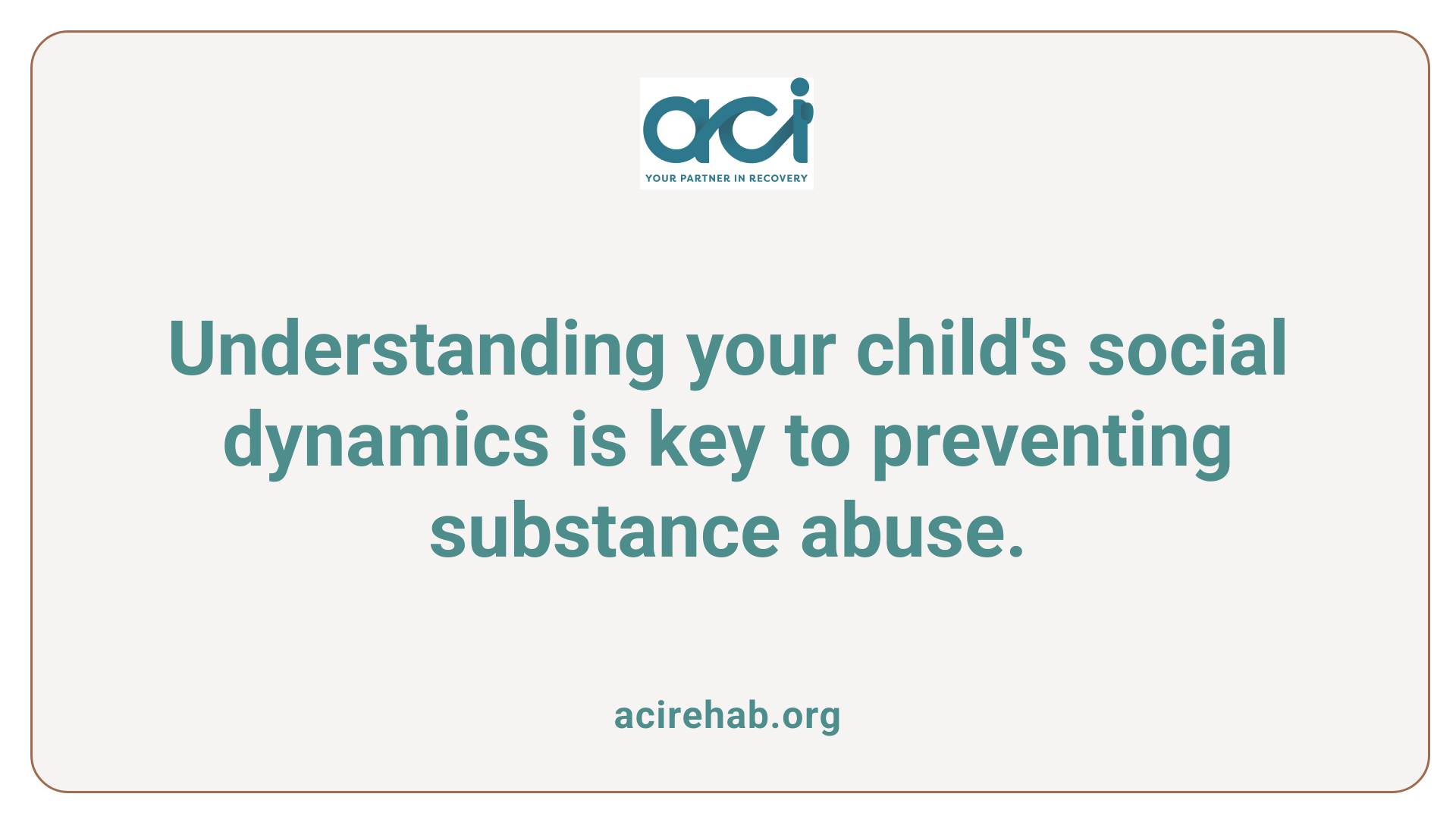
Understanding peer influence
Teenagers are highly influenced by their peers, and this social dynamic can significantly impact their choices regarding substance use. It’s essential for parents to understand that peer pressure can lead to experimenting with drugs or alcohol, especially in environments where these substances are normalized. By fostering a strong line of communication, parents can help their children navigate these pressures more effectively.
Parents should encourage open discussions about friendships and social circles. By expressing interest, they can gain insight into their teen’s interactions and help them understand the potential impact of their friends’ values.
Observing friendships
Taking an active role in understanding who your child is spending time with can be crucial. Parents should observe if their teen’s friends are engaging in risky behaviors, as this often serves as a warning sign. A simple way to maintain awareness is to host get-togethers at home or encourage their children to invite friends over, facilitating a closer look into their social life.
Regular check-ins regarding their experiences and feelings about friends can empower teens to make safer choices. Creating an open, nonjudgmental atmosphere allows children to discuss peer dynamics comfortably, making them feel supported in decision-making regarding their friendships.
4. Foster a Supportive Home Environment
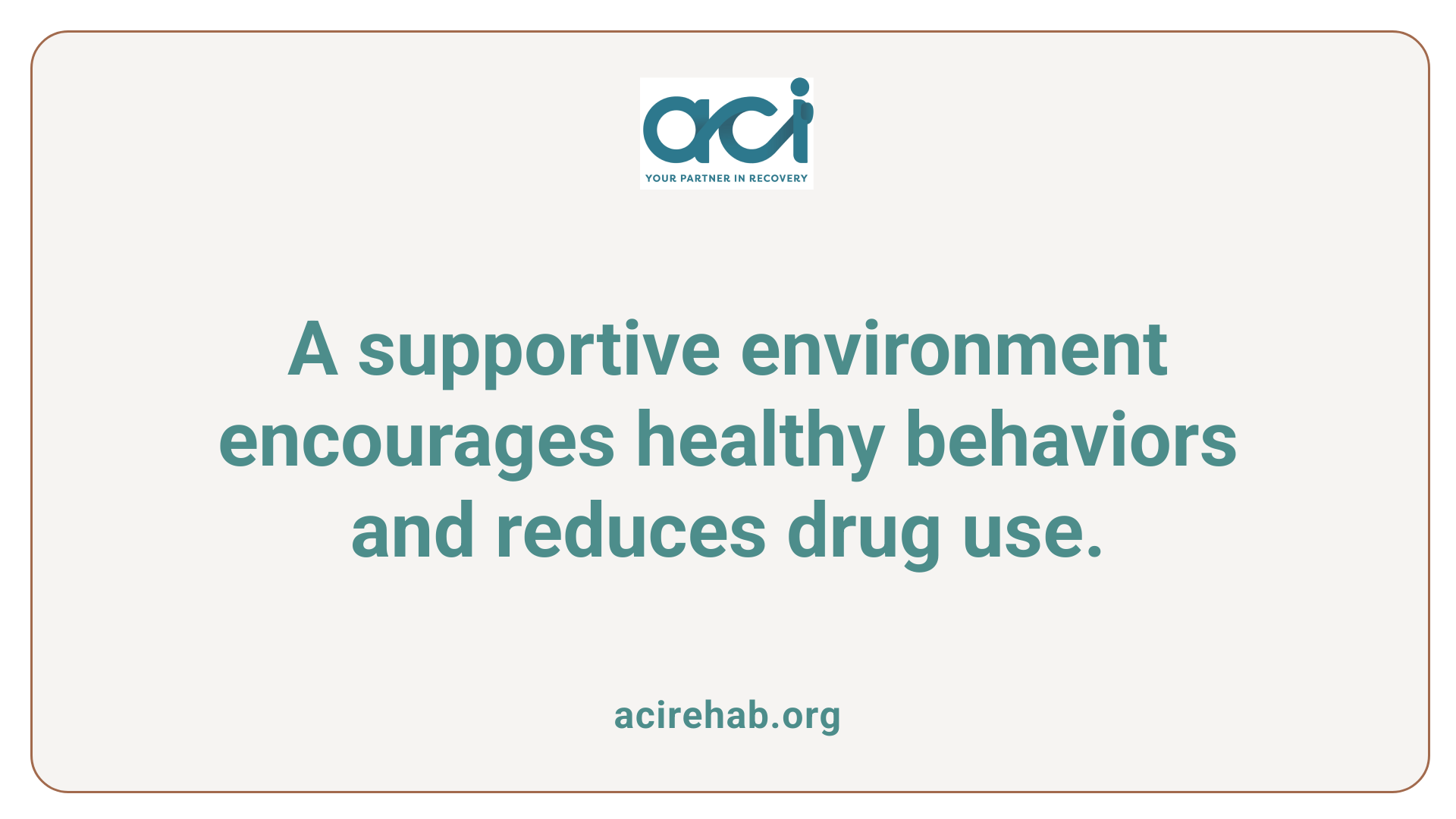
What strategies can create a supportive environment that discourages drug use?
Creating a supportive environment that discourages drug use involves several important strategies. First and foremost, fostering open communication between parents and children is crucial. Engaging children in conversations about their feelings, challenges, and the inherent dangers of substance abuse can significantly decrease the likelihood of drug experimentation. Children are much less likely to abuse drugs when they have a solid platform for discussion with their parents.
It’s also essential for parents to monitor medications at home. Given the alarming rise in prescription drug misuse among teenagers, ensuring that medications are either locked up or disposed of properly decreases access and temptation. Parents should conduct regular inventories of their medicine cabinets to keep track of potentially abused substances.
Establishing clear rules regarding substance use is another vital measure. Communicating specific expectations allows children to understand the boundaries set for them, which can reduce rebellious tendencies. It’s critical that children perceive these rules as protective rather than purely restrictive.
Lastly, addressing any parental substance use disorders through appropriate rehabilitation and support is invaluable. Breaking the cycle of abuse not only positively influences children’s emotional well-being but also fosters a healthier family dynamic.
Engaging in family activities
Encouraging participation in family and community activities can also reinforce positive behavior, helping children build self-esteem and social connections. Engaging in hobbies, sports, or volunteering allows families to bond and can divert attention from drugs while providing healthy outlets for stress.
Creating a truly supportive environment requires intentional actions and ongoing effort. When children feel safe and understood at home, they are more likely to navigate the challenges of adolescence successfully.
5. Educate and Manage Medication Safety
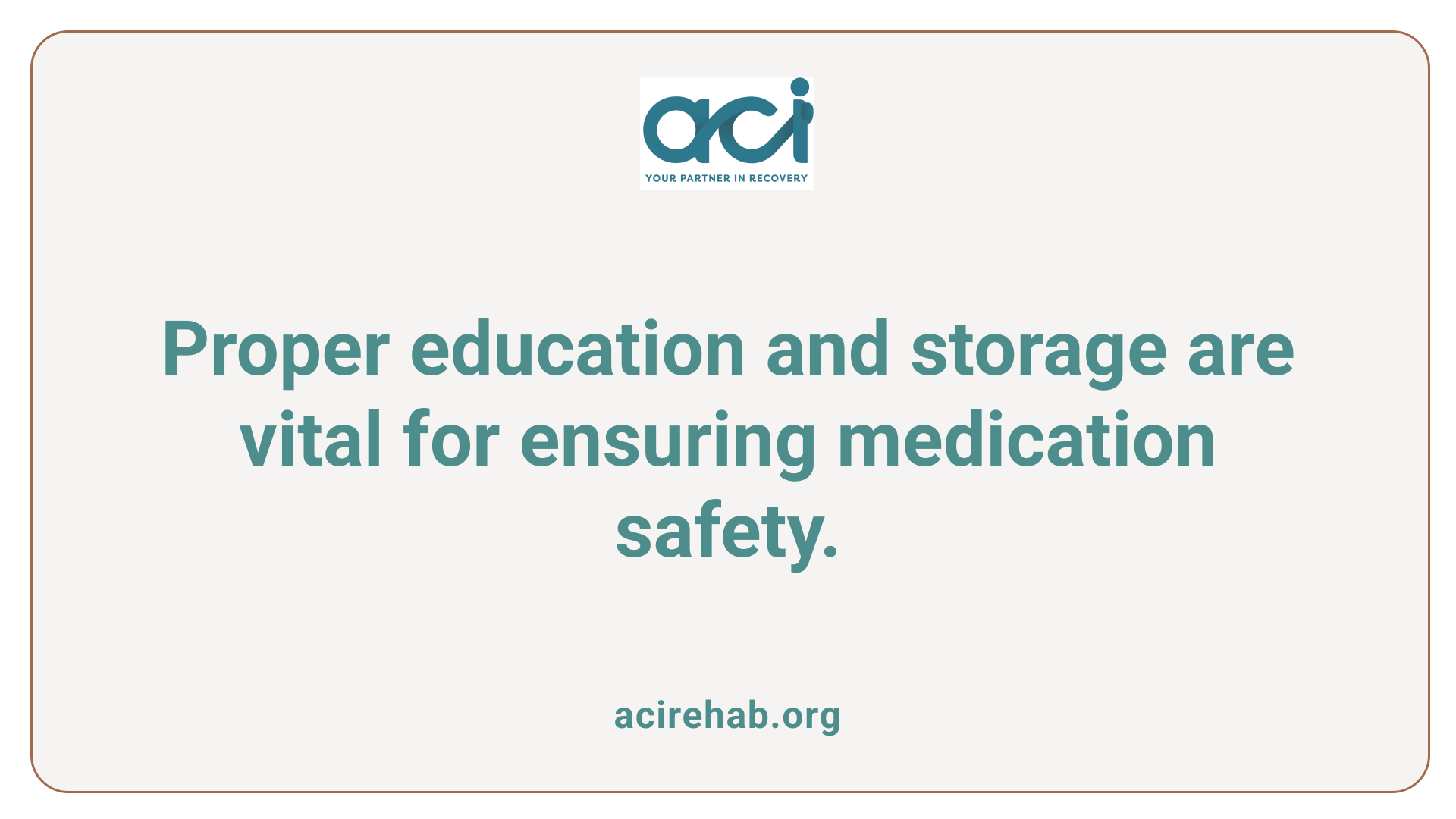
Understanding Prescription Drug Risks
Parents and caregivers play a crucial role in educating their children about the risks associated with prescription and over-the-counter medications. Open discussions about the potential for misuse help demystify medications and create awareness. It’s essential to present factual information while avoiding sensationalism, so that children can make informed choices about their drug use. By emphasizing that just because a substance is prescribed does not mean it is safe for them to use without guidance, children learn to respect medication as a powerful tool that must be handled responsibly.
Educating children on the dangers of common prescription drugs can significantly reduce the risk of abuse. This includes understanding the implications of misusing opioids, which are often prescribed for pain relief. Engaging in conversations and setting clear expectations helps emphasize the importance of responsible medication use.
Safe Medication Storage
Proper medication storage is vital in preventing unauthorized access. Parents should store medications securely, preferring locked cabinets where possible. Here’s a checklist of safe medication practices:
| Action | Details |
|---|---|
| Lock Up Medications | Use childproof locks on cabinets and keep them out of reach. |
| Inventory Regularly | Check and discard unused or expired medications safely. |
| Dispose Properly | Return unused medications to pharmacies for safe disposal. |
| Beware of Opioids | Use naloxone (Narcan) for emergencies involving overdoses. |
| Educate Family and Friends | Ensure those who care for your child understand medication safety. |
Using these strategies not only helps reduce the likelihood of accidental use or abuse, but also communicates the seriousness of medication safety, reinforcing positive behaviors regarding drug awareness.
Empowering Parents to Lead the Way
Protecting your child from drugs is an ongoing process that requires diligence, communication, and support. By implementing these strategies, you can build an environment where your child feels safe and informed to make healthy choices. Remember, early discussions and active involvement in your child’s life are key components in preventing drug use. With the right tools and understanding, you can play a crucial role in guiding your child towards a drug-free future.
References
- Teen drug abuse: Help your teen avoid drugs – Mayo Clinic
- 5 Ways to Help Protect Your Child From Drug Abuse
- Talking to Your Kids About Drugs (for Parents) | Nemours KidsHealth
- Prevention Tips for Every Age – Partnership to End Addiction
- Teens and drugs: 5 tips for talking with your kids – Harvard Health
- Why It’s Important To Talk To Your Child About Alcohol & Drugs
- Protect Your Kids! Prescription Drug Alert
- 5 Ways to Protect Your Child from Drugs – Wellbrook Recovery

